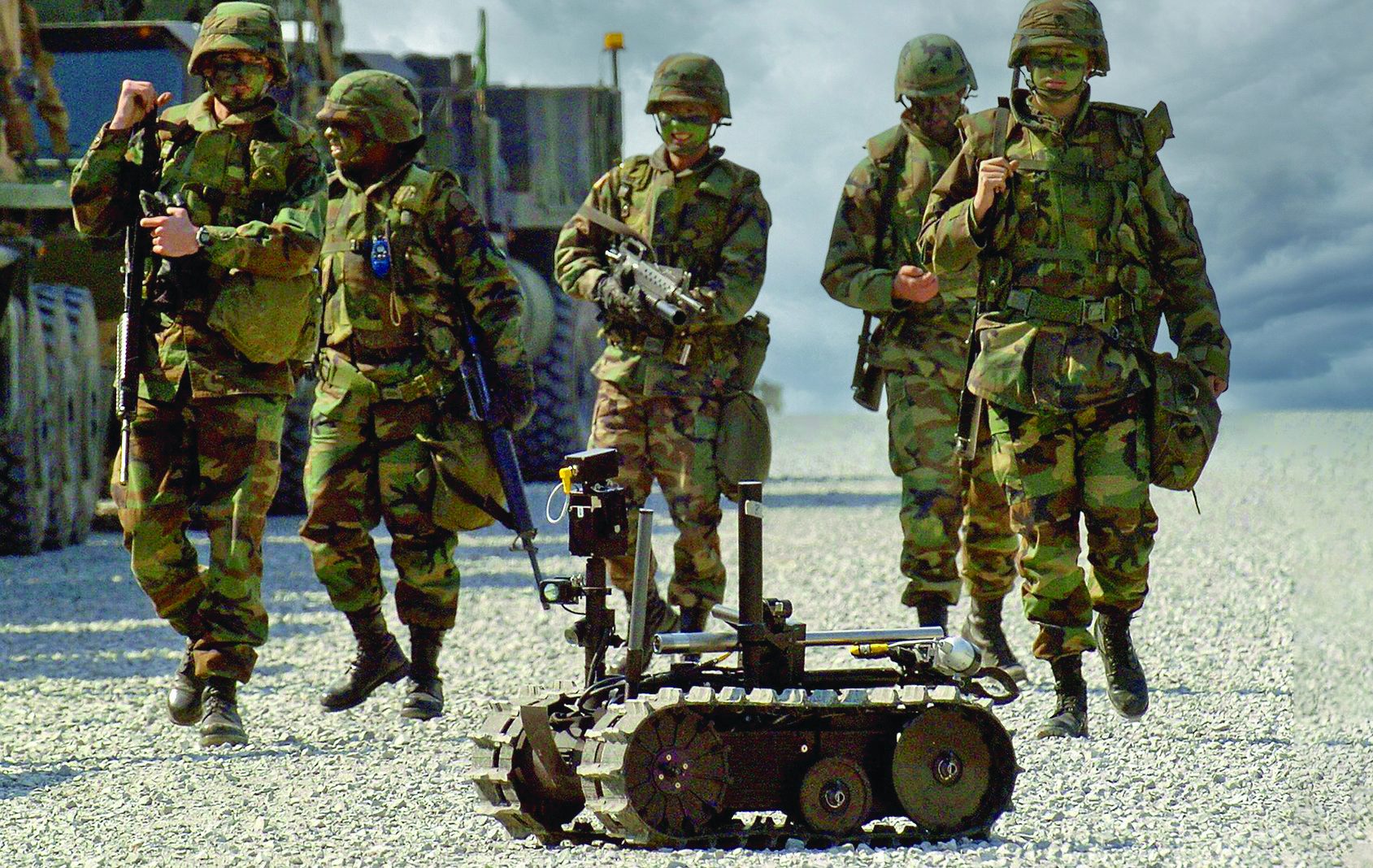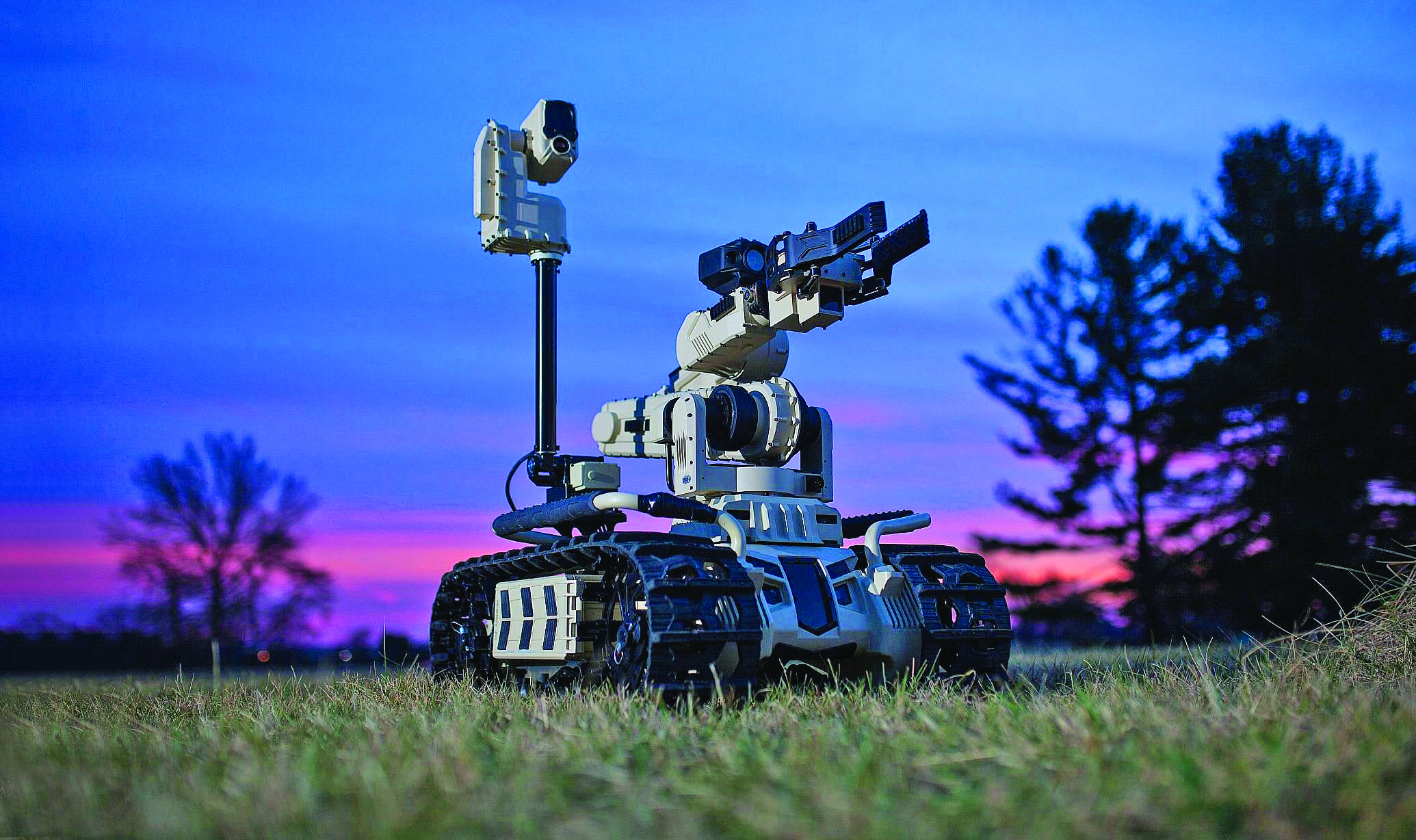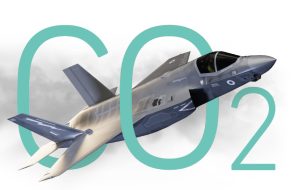In the future, the robot-soldier team will constitute a key element of warfare, creating a combat force that is complex but ultimately has more endurance and effectiveness. The complexity of the future battlefield comes with its own set of problems, in addition, the diversity of robotic systems and the nearly endless number of possible military missions create a dilemma for researchers trying to predict the performance of man-machine interactions in future environments.
The effects of advances in innovative technologies such as artificial intelligence, sensors, mechanical systems and software on both man and machine have become quite clear and one of these effects is the issue of interactions between robots and humans.
Initially, investments in this interaction were mainly focused on robots providing services to people, but with the rapid development of modern industry, the integration of various aspects of physical and social interaction became equally necessary for the development of industrial robots.
The domains of service and industrial robotics face very similar problems and can use similar solutions because when robots are working in the service sector, they are fully integrated into the human environment.
Furthermore, humans and robots have distinct roles in these two environments, for instance, humans work as assistants and trainers for industrial robots, while service robots take on the role of helper for the guide, teacher, nurse or any kind of service provider.
However, in either case, automated systems must be able to make the appropriate decisions about heterogeneous entities present in the environment, for instance, service and industrial robots must be aware of the presence of human operators, ensure safe operations, account for uncertainty, and follow the instructions of the human operators, therefore the human operator must be integrated into the decision-making process.
Moreover, the incorporation of advanced technologies and software into industrial systems, and the increasing human-robot interaction, poss challenges for some of the features of service robots, such as safety, communication, and knowledge, which are currently envisioned in these fields.

Interactive communication between man and machine
The human-robot interactive relationship is the subject of intensive study and research, as this rapidly advancing field aims to understand, design and evaluate robotic systems that are used by or work with humans.
This requires a mixture of different sciences including computer, artificial intelligence, robotics, design, psychology and social sciences.
By definition, interaction requires communication between robots and humans, which may take many forms that are greatly influenced by how robots and humans operate.
Furthermore, the Human-robot interaction extends across a variety of fields, including manufacturing, medicine, surgery, aerospace, aviation, deep sea projects, agriculture, education, and military operations.
In recent years, physical interactions have become widespread in various fields, which prompted research into the applications of such systems as well as several core topics of collaboration, such as the assignment of shared tasks, synchronization and coordination, contact control, physical interaction, adaptive role assignment during collaboration, learning through demonstrations and secure control.
Meanwhile, research in social robotics has made tremendous progress in understanding the behaviour and complexity of verbal and nonverbal cues that humans and robots exchange during an interaction, highlighting critical aspects such as trust, mutual awareness and taking turns.
These studies were initially driven by the increase in the applications of service robots, from the introduction of robots in shopping malls and stores to hospitals and homes, however, they are now a necessity for the acceptance of new intelligent robotics technologies in other industrial fields, such as manufacturing.
The human-robot interaction research community is currently working to develop robots’ physical and social interaction skills.
The European Commission’s Strategic Research Agenda for Robotics recognizes the importance of robots.
With increased awareness and ease of use, robots mark the dawn of a new era as assistants that work everywhere to improve business competitiveness and people’s quality of life.
Furthermore, the role of robotics is expected to constantly expand beyond the traditional role in the manufacturing industry, providing significant opportunities in the short to medium term in sectors such as agriculture, healthcare, security, transportation and military applications, while in the long term, it is expected that robots will permeate the domains of every human activity, including homes.
The origin of robots
The Czech play writer “Karel chapek” was the first to coin the term “robot” in his 1921 play, the term was derived from the Czech word “robota”, which describes the work that the peasant owes the landowner or “toiling” and “rabota” was the ancient Slavic word for slave, in other words, a robot is a peasant or a slave.
Shapek’s play began with robots performing the actions of their human masters and ended with those robots rebelling against their creators and killing the human race, which became a common theme for science fiction writers.
For his part, science fiction author Isaac Asimov, who often wrote about robots in the 20th century, disagreed with the theory that robots would eventually destroy humanity, portraying them as serving humanity.
Asimov’s robots came preprogrammed with three very simple initial directives, or “laws of robotics”:
1
A robot may not harm a human being directly or indirectly due to the cessation of work.
2
A robot must obey orders given to it by humans unless such orders conflict with Law No.1
3
A robot must protect its existence, as long as this protection does not contradict the First or Second Laws.
For their part, military robots must protect the lives of soldiers, allies, and civilians and take their orders from friendly forces and not the enemy.
Moreover, robots must be designed to not care about their existence to be able to save human lives by sacrificing themselves if necessary.
”For me, robots are our response to suicide bombers,” says robotics expert Bart Everett.
A lot of academic research over the recent years has focused on the ethics of arming AI systems and allowing them to make lethal decisions, and the Georgia Institute of Technology published a book titled “Managing Lethal Behavior in Autonomous Robots,” which provided the basis for the ethics of combat robots.
The book indicated that with proper programming, autonomous robots can behave more ethically on the battlefield than soldiers.
Soldier-robot interaction
Throughout history, armies were slow to adapt advanced technologies into generally accepted military tactics, which led to losses and defeats, for instance, the European countries’ delay in integrating tanks into their militaries in the early 1940s left them at a disadvantage against Germany.
Therefore, military institutions are well aware of the need to employ robots in military operations, because the rapid development of robotics technology will not only change the way we fight wars but will also change who does the fighting.
However, the complexity of future battlefields poses problems regarding the diversity of robotic systems.
While the endless number of possible military operations poses a dilemma for researchers who wish to study human-robot interactions in future environments, such interactions in future military operations provide researchers with an opportunity to study specific military issues and problems, such as the interaction of operators with ground or aerial robots.
Furthermore, researchers can study autonomous equipment capable of intelligent behaviours on the battlefield, as the ability of humans to team up with intelligent systems in such environments is at the centre of human-robot interaction.
This ability is essential, given that the robot-soldier team will be an important element in future battlefields, creating a more enduring and effective complex combat force.
Although there is a dogma about the use of robots in combat, the consensus in the military is that human life will always be valued above equipment or robots, and the main reason for using robots on the battlefield is their ability to perform the most dangerous combat missions.
However, if soldiers and commanders do not view these robots as valuable members of the team and possibly establish emotional bonds with them, these robots may not be used as intended.
Humans have always shown a remarkable tendency to make emotional connections with machines, for generations, car owners have been naming their cars and boat owners do the same with their boats and given that robots will exhibit signs of intelligence, it is more likely that they will be able to establish stronger bonds, especially when robots can save their lives in combat.
However, such emotional bonds could have serious repercussions on the dynamics of future military training for both human soldiers and robots, as the trend to use autonomous or semi-autonomous machines to perform the military’s difficult and dangerous jobs, is likely irreversible.
Sergeant Ted Bogoch, the maintenance shop manager at Camp Victory near Baghdad, Iraq, said that one rainy day in January 2005, an explosive ordnance disposal technician walked into the maintenance shop holding a box containing the remains of his robot counterpart, whom he called “Scooby-Doo”.
The EOD technician explained that the robot was blown to pieces while trying to disarm an explosive device.
”There wasn’t much left of Scooby and his track record suggests he was a really great robot”, recalled Bogoch.
Bogosh told the technician that Scooby-Doo was beyond repair and offered him a replacement, but the technician was visibly upset and insisted that he didn’t want a new robot, he wanted Scooby-Doo back.
This confirms the conclusion of some researchers that interaction between humans and robots can be divided into two categories: remote interactions and close interactions.
Scientists assume that close interactions lead to stronger relationships than remote ones, as the hypothesis is that soldiers can form stronger bonds with unmanned ground vehicles that are operated closely, compared to drones, which are generally operated remotely.

An interface for dialogue and mutual understanding
Dialogue is one of the most basic ways humans use language, and is a desirable capability for autonomous systems, therefore army researchers developed a novel dialogue capability to transform Soldier-robot interaction and perform joint tasks at operational speeds.
In the future, the environment of army operations will require technology that allows AI-operated machines to understand and execute commands, in addition, soldiers will have to interact with robots as members of their team.
Based on spoken dialogue with autonomous systems, researchers from the U.S. Army’s Combat Capabilities Development Command, the Army Research Laboratory, and the University of Southern California’s Institute for Innovative Technologies, a think tank sponsored by the Department Of Defence, came up with an approach to enable the robot to flexibly interpret a soldier’s intentions and respond to them.
This technology, which is currently the key component of dialogue processing in the lab, aims to revolutionize soldier-robot interaction and enable the performance of joint tasks at operational speeds.
One example of such technology is a prototype called the “Joint Understanding and Dialogue Interface”, which enables bi-directional conversational interactions between soldiers and autonomous systems, allowing them to access multiple sources, such as a soldier’s speech and the robot’s perception system, to assist in collaborative decision-making.
This effort aims to support the priority of modernizing combat vehicles and reducing soldier burden when cooperating with autonomous systems by allowing soldiers to use verbal commands to control autonomous systems such as robots.
This technology enables a soldier to interact with autonomous systems through bi-directional speech and dialogue in tactical operations and gives soldiers the ability to give the robot a command.
In addition, this technology gives robots the ability to ask soldiers for clarification or provide status updates upon task completion and instead of relying on predefined and perhaps outdated information about a task, dialogue enables these systems to supplement their understanding of the world by conversing with their fellow humans.
”We used statistical classification technology to develop the AI’s conversation skills using the latest natural language understanding and dialogue management techniques,” says military researcher Dr Felix Gerwitz.
Statistical language classification enables autonomous systems to interpret a soldier’s intent by recognizing the purpose of communication and performing actions to achieve the primary objective.
For instance, if the robot receives a command to “rotate 45 degrees and send a photo,” it can interpret the instructions and carry out the task.
The Joint Understanding and Dialogue Interface’s ability to benefit from the natural spoken language will reduce the learning curve for soldiers who will need to control or cooperate with robots, which may play different roles in any given mission, such as recon or providing logistical support.
Ultimately, the goal is to shift the paradigm of Soldier-robot interaction from today’s heads-down, hands-full joystick operation of robots to a heads-up, hands-free mode of interaction where a Soldier can team with one or more robots while maintaining situational awareness of their surroundings.
According to the researchers, the Joint Understanding and Dialogue Interface differs from similar research currently being conducted in the civilian sector, which all require large and expensive data sets to train the system.
One of the key advantages of this interface is that it reduces the time needed to train soldiers to control a robot because speech is a natural and intuitive interface, in addition, it reduces the time robots need to adapt to new environments.
Furthermore, the civil dialogue systems, typically trained for search and rescue missions, are usually designed to mimic the style of soldier-robot interaction that would occur in a future tactical environment.
By creating a natural speech interface for these complex autonomous systems, researchers can support the goal of developing hands-free controls to improve situational awareness and give soldiers a critical advantage.
What makes this research uniquely important, is that it enables a two-way dialogue between soldiers and autonomous systems such as robots, as well as bolsters transparency by giving the system the ability to explain its performance, making it possible to analyze any particular behaviour.
This is critical for military applications, where ethical concerns require greater transparency from robots.
With future tactical environments likely to include mixed teams comprised of soldiers and robots, this technology will have a transformative effect on the future of military action.
However, researchers say that purpose-built robots must be studied and developed for their specific missions, explaining that robots will never replace humans on the battlefield or in the decision-making process and that robots should be controlled by humans and never given complete autonomy.
» By: Retired Colonel Eng. Khaled Al-Ananzah
(Advisor and Trainer in Environmental and Occupational Safety)













